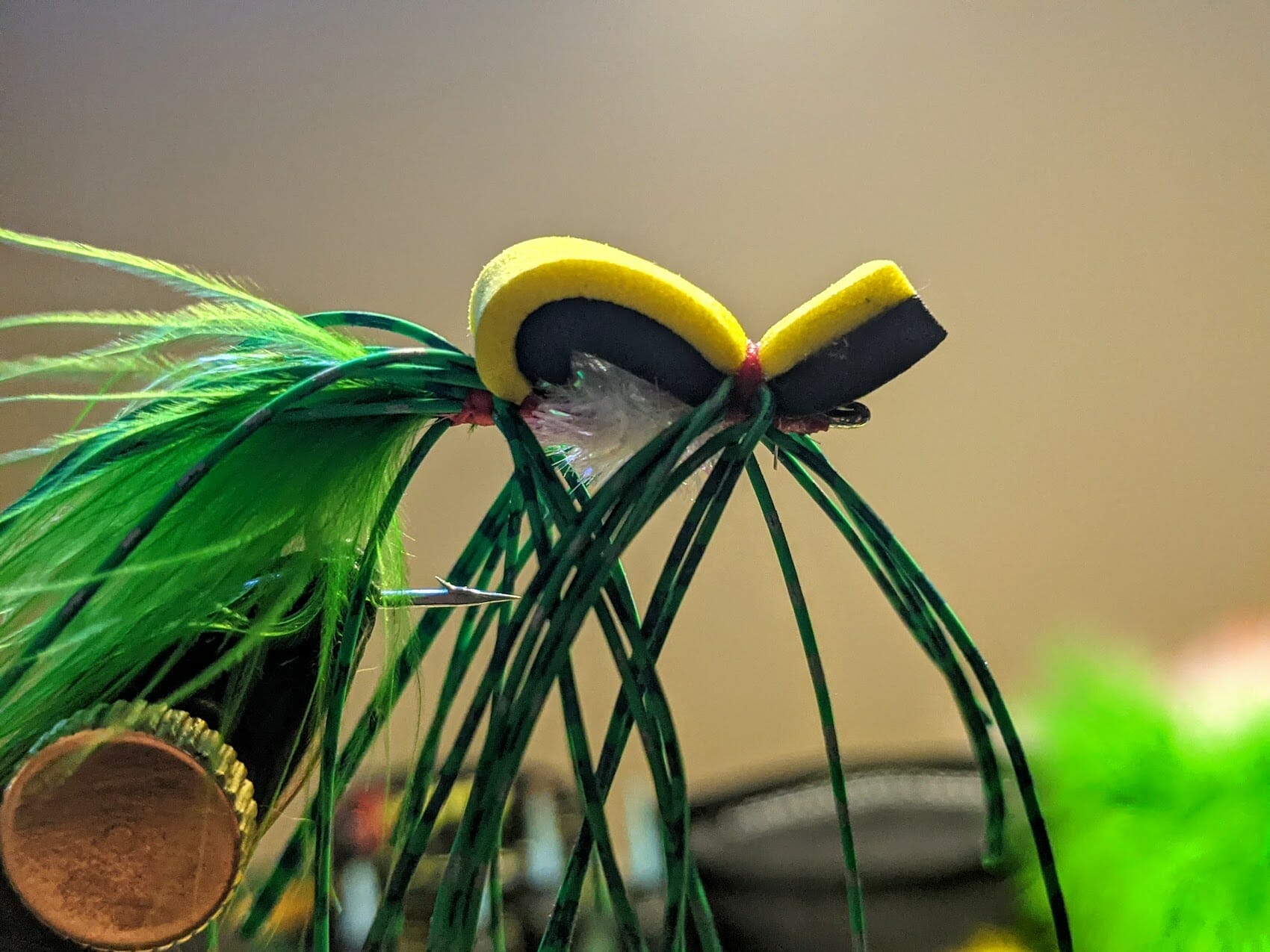I’m headed to East Texas this week for some bass and panfish fishing in some of the region’s swampier areas, and I’ve done some tying over the last few days to make sure I’m armed with “all the right stuff.”
But I didn’t feel like I was ideally equipped until I tied up a handful of Gurgler patterns — foam floaters that push water and literally “gurgle” when they’re stripped erratically across the surface. It’s the hottest part of the summer down South, but in the shaded cypress swamps and spring-fed creeks running through the precious few national forest acres along the Texas border with Louisiana, it’s prime time for opportunistic bream and native spotted bass, white bass and even crappie.
And something that appears to be struggling on the surface is an easy meal for these predatory warm-water fish. Enter the Gurgler.
I’ve tied Gurglers for all kinds of fish. In Nevada’s Blue Lakes about 100 miles north of Winnemucca, I caught tiger trout using Gurglers. In the estuary foam of Prince of Wales Island, pink salmon would come after a Gurgler. North, in the boreal woods of Saskatchewan and Manitoba, pike love a big Gurgler. I caught my personal best smallmouth bass on Minnesota’s Zumbro River on a Gurgler.
Gurglers float high, move water and generally make a lot of noise. They are also fairly easy to tie — certainly easier than your average spun-hair popper (raise your hand if you lack the patience for this kind of detail work at the vise!), and easier than working a plug of balsa wood into something resembling a frog or struggling baitfish.
It’s not a fly for all seasons. It might be a fly for all fish, though. If you haven’t tried your hand at tying a Gurgler, it’s pretty easy — the photo at the top is a fairly solid recipe.
A couple of tips for working with foam, though: first, don’t use too much pressure with your tying thread when you start wrapping the foam to the shank — if you do, you can slice right through it. Instead, wrap it gently at first with increasing pressure as you go. Second, the “head” of the fly — the foam lip that makes it “gurgle,” should be superglued together. Don’t be shy about that, either. Rubber legs? Use what feels right for the fish you’re after — I wanted this fly to make a real racket in the shaded, stained creeks of the Big Thicket National Preserve, so I went big. For clearer water, use fewer. Simple as that.
I’ll let you know how this sucker fished. Until then, gurgle on.



